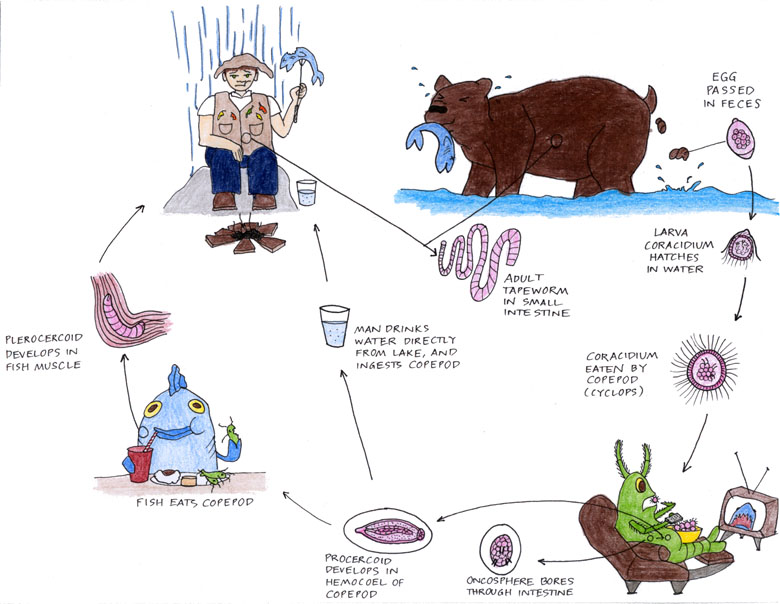

Diphyllobothrium latum exhibits little host specificity as indicated by this graphic with humans and bears as two potential definitive hosts. These pseudophyllidean tapeworms are located in the small intestine and pass egg capsules which exit via a uterine pore. If the feces are deposited in freshwater, embryonation of 8 days to several weeks (depending on temperature) results in the emergence of a ciliated known as a coracidium. Copepods of a variety of genera including Cyclops and Diaptomus may ingest the coracidium where it develops into a procercoid in the hemocoel of the crustacean. When the infected copepod is eaten by a wide variety of freshwater fish, the procercoid develops into a plerocercoid in the muscles of the fish. Smaller fish may serve as paratenic hosts when eaten by larger fish. If humans, bears or any other suitable definitive host eats the fish raw or poorly cooked, the plerocercoid develops into the adult worm. In addition, copepods may accidentally be ingested by humans or other definitive hosts while drinking copepod-contaminated water. In those cases, the plerocercoid may develop in the definitive or final host as a sparaganum. The condition in which plerocercoids or spargana develop in the definitive host is known as sparaganosis. Since the spargana are difficult to identify to species, a number of non-human infecting tapeworms may lead to sparganosis through accidental ingeston of infected copepods. Diphyllobothrium mansonoides, a tapeworm of cats, is most likely the culprit in sparganosis in North America.